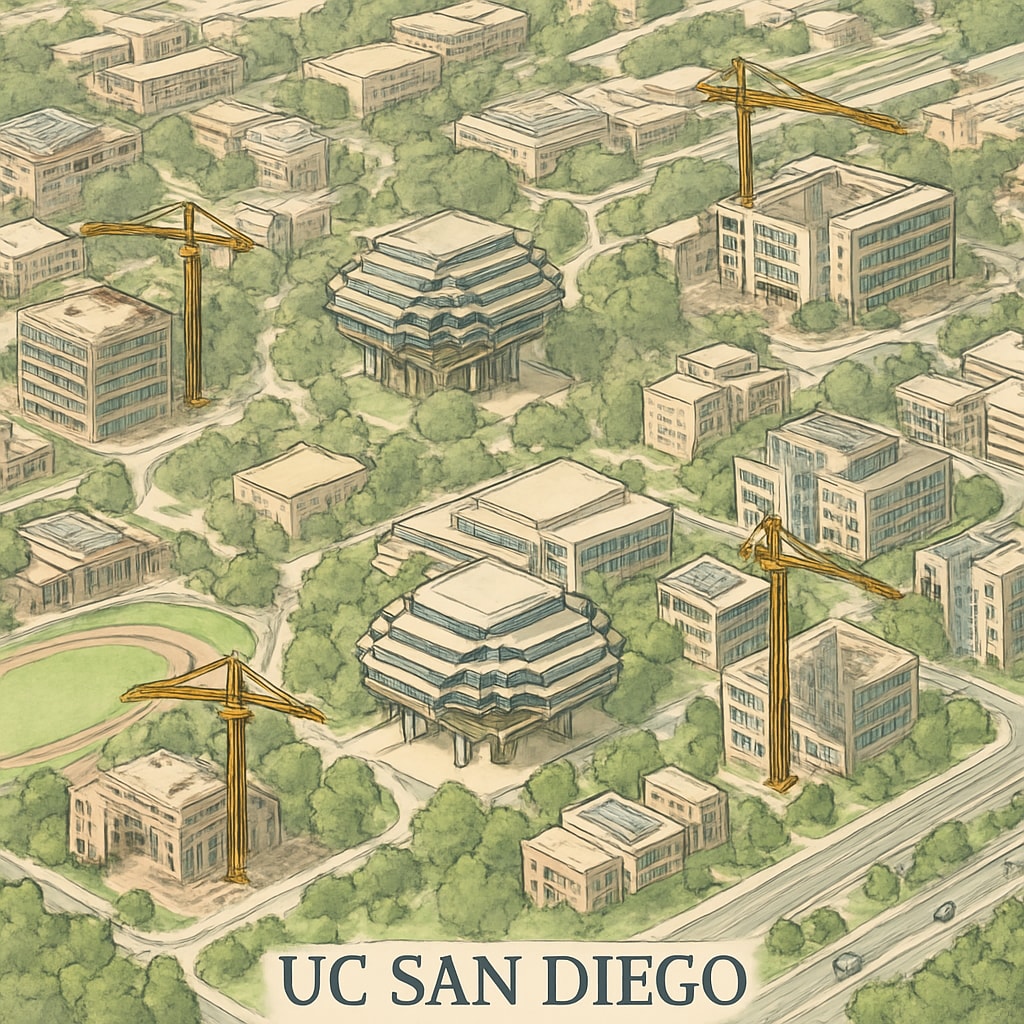UC San Diego (UCSD), one of the nation’s leading research universities, has unveiled an ambitious expansion plan aiming to increase its student population to 56,000 by 2040. This bold initiative, representing one of the largest enrollment growth efforts in the University of California (UC) system, will not only redefine the landscape of higher education but also create a ripple effect across K12 education systems. By addressing the increasing demand for college access, UC San Diego is setting a precedent for educational reform that will influence generations to come.
The Vision Behind UC San Diego’s Expansion
UC San Diego’s decision to expand its enrollment underscores its commitment to meeting the growing demand for higher education opportunities in California. The state’s population continues to grow, and with it, the need for accessible, high-quality university education. The 2040 target of 56,000 students represents a nearly 50% increase from current enrollment levels. This expansion also aligns with the broader University of California system’s goals to address the state’s workforce needs and foster economic growth.
To accommodate this growth, UCSD plans to build new residential facilities, expand academic programs, and enhance infrastructure to support an increasingly diverse student body. By doing so, the university aims to maintain its reputation as a hub for cutting-edge research and innovation while offering world-class education to a larger population.

Implications for Higher Education
The expansion of UC San Diego is poised to have a transformative impact on the broader higher education sector. First, it challenges other institutions to rethink their capacity and accessibility strategies. As more students gain access to top-tier universities like UCSD, competition for enrollment at other schools may shift, creating opportunities for smaller institutions to redefine their unique value propositions. Additionally, the increase in graduates from UCSD will contribute to a highly skilled workforce, particularly in STEM (Science, Technology, Engineering, and Math) fields where the university excels.
However, such growth also poses challenges. The university must ensure that the quality of education and student experience does not suffer due to overcrowding or stretched resources. Investments in faculty, staff, and student support systems will be critical to maintaining UCSD’s academic excellence and research output.
Impact on K12 Education
UC San Diego’s expansion plan will have significant downstream effects on the K12 education system. As the university increases its enrollment capacity, high schools in California and beyond will likely see heightened expectations to prepare students for admission to competitive institutions. This may drive reforms in K12 curricula to better align with the skills and competencies required for success in higher education.
Moreover, UCSD’s commitment to diversity and inclusion will encourage efforts to close achievement gaps in K12 education. Outreach programs, partnerships with local schools, and initiatives to promote STEM education are expected to play a pivotal role in ensuring that students from underrepresented backgrounds have equitable access to higher education.
In addition, the increased demand for college readiness may lead to more robust teacher training programs and investments in educational technology to enhance learning outcomes. Schools might also focus more on fostering critical thinking, creativity, and problem-solving skills to prepare students for the rigorous academic environment at UCSD and other top universities.

Challenges and Opportunities
While the expansion plan offers numerous benefits, it also presents significant challenges. Housing shortages, traffic congestion, and environmental impacts are all potential issues that must be addressed as the university grows. UCSD has already begun implementing sustainable practices and infrastructure projects to mitigate these concerns, but continued community engagement will be essential.
On the flip side, the expansion creates opportunities for innovation in education and urban planning. For instance, new partnerships between UCSD and local industries could lead to job creation and economic development. Additionally, the university’s emphasis on interdisciplinary collaboration may result in groundbreaking research that addresses global challenges such as climate change, healthcare disparities, and technological advancement.
Looking Ahead: A Model for Educational Transformation
UC San Diego’s ambitious expansion plan is more than just a numbers game—it represents a vision for the future of education. By investing in infrastructure, academic excellence, and community partnerships, the university is setting a benchmark for how institutions can grow responsibly while addressing societal needs.
As the plan unfolds, its success will depend on UCSD’s ability to balance growth with quality, accessibility, and sustainability. If executed effectively, this initiative could serve as a model for other universities worldwide, demonstrating how expansion can drive innovation and inclusivity in education.
In the coming years, the ripple effects of UC San Diego’s growth will undoubtedly reshape the educational ecosystem, from K12 classrooms to graduate research labs. For students, educators, and policymakers alike, this bold endeavor offers valuable insights into the evolving role of education in our ever-changing world.
Readability guidance: The article uses concise paragraphs, active voice, and transitional phrases to ensure clarity and flow. Lists and examples are included to summarize key points, and technical terms are explained when necessary.


